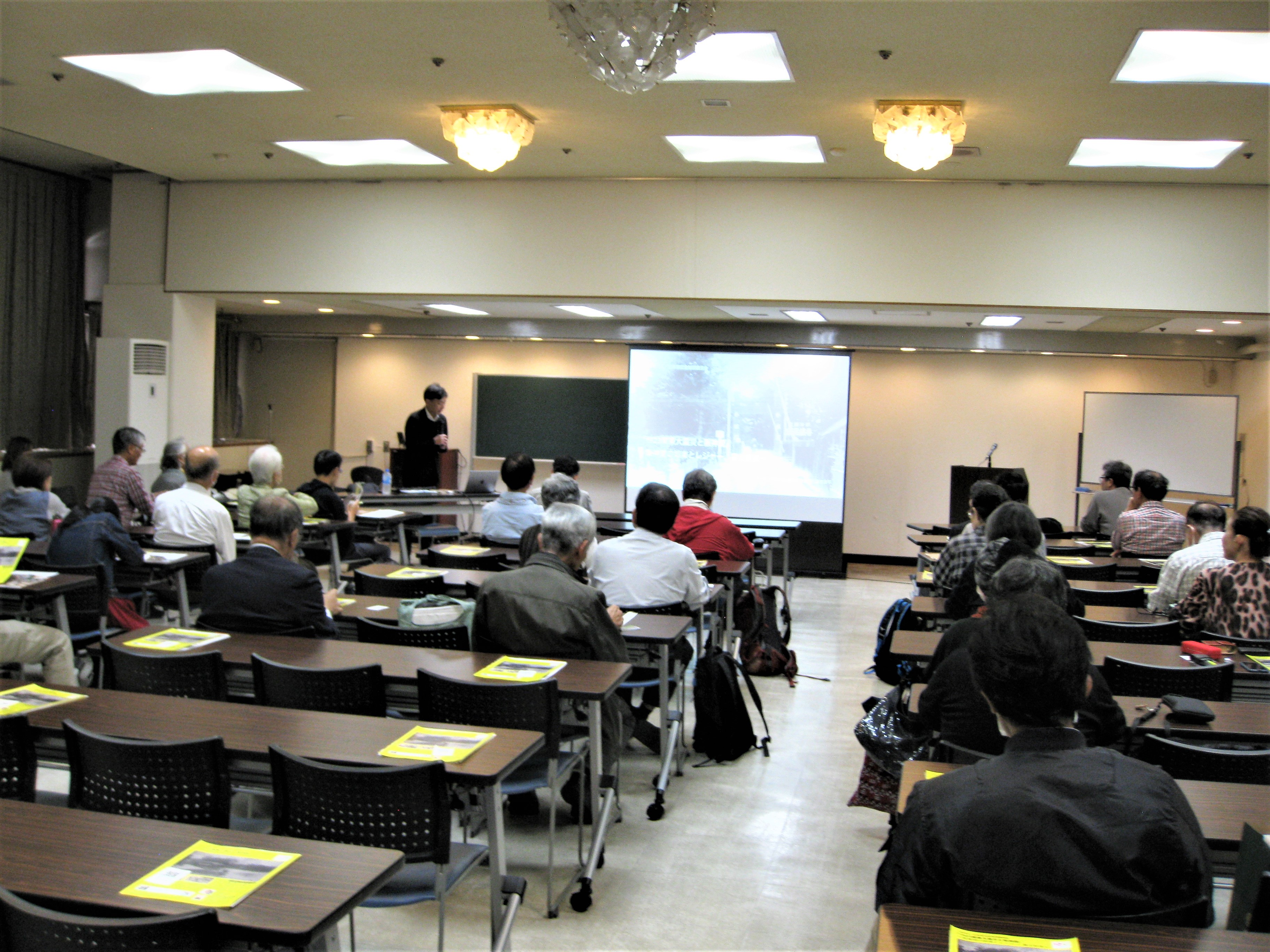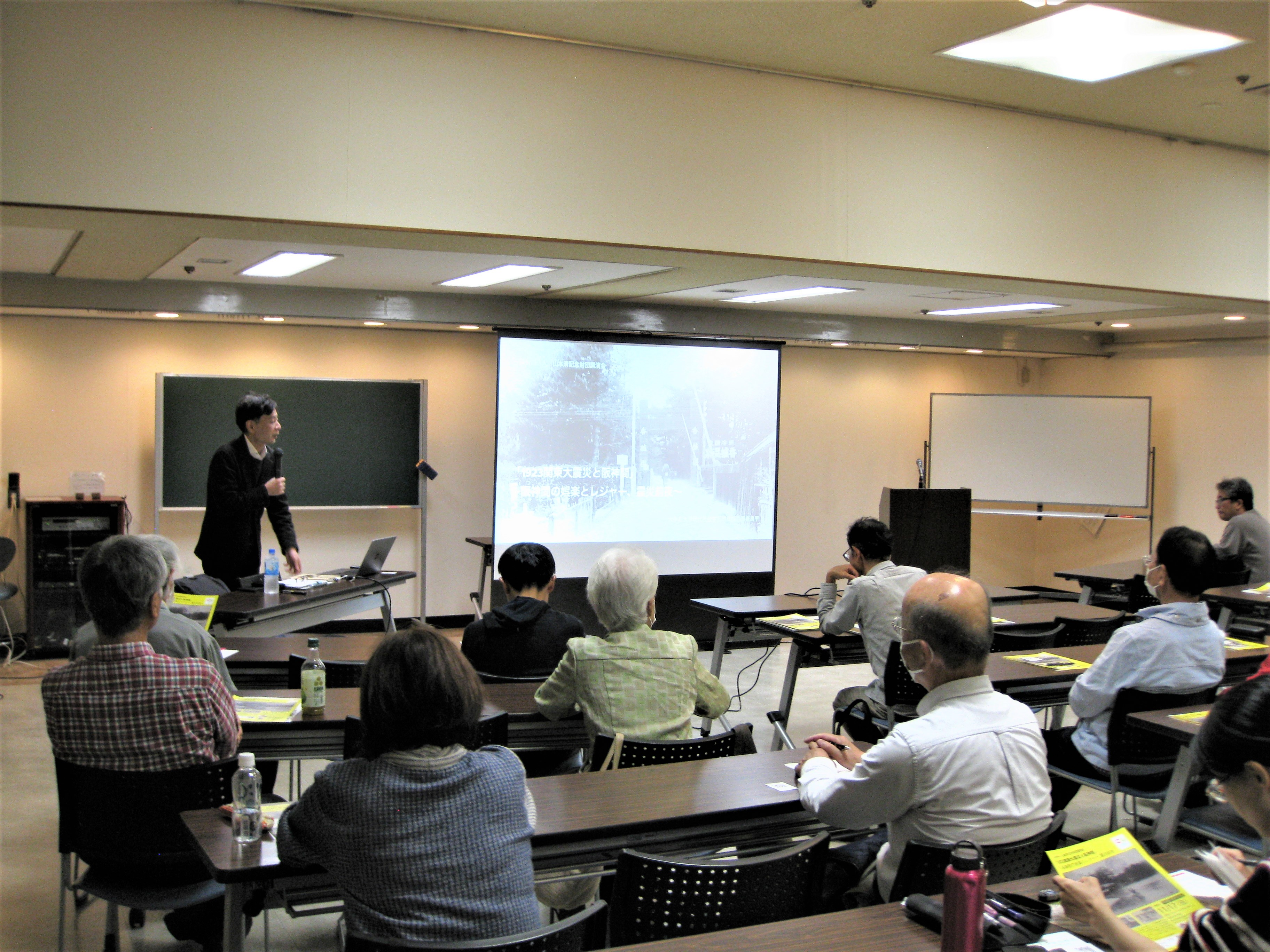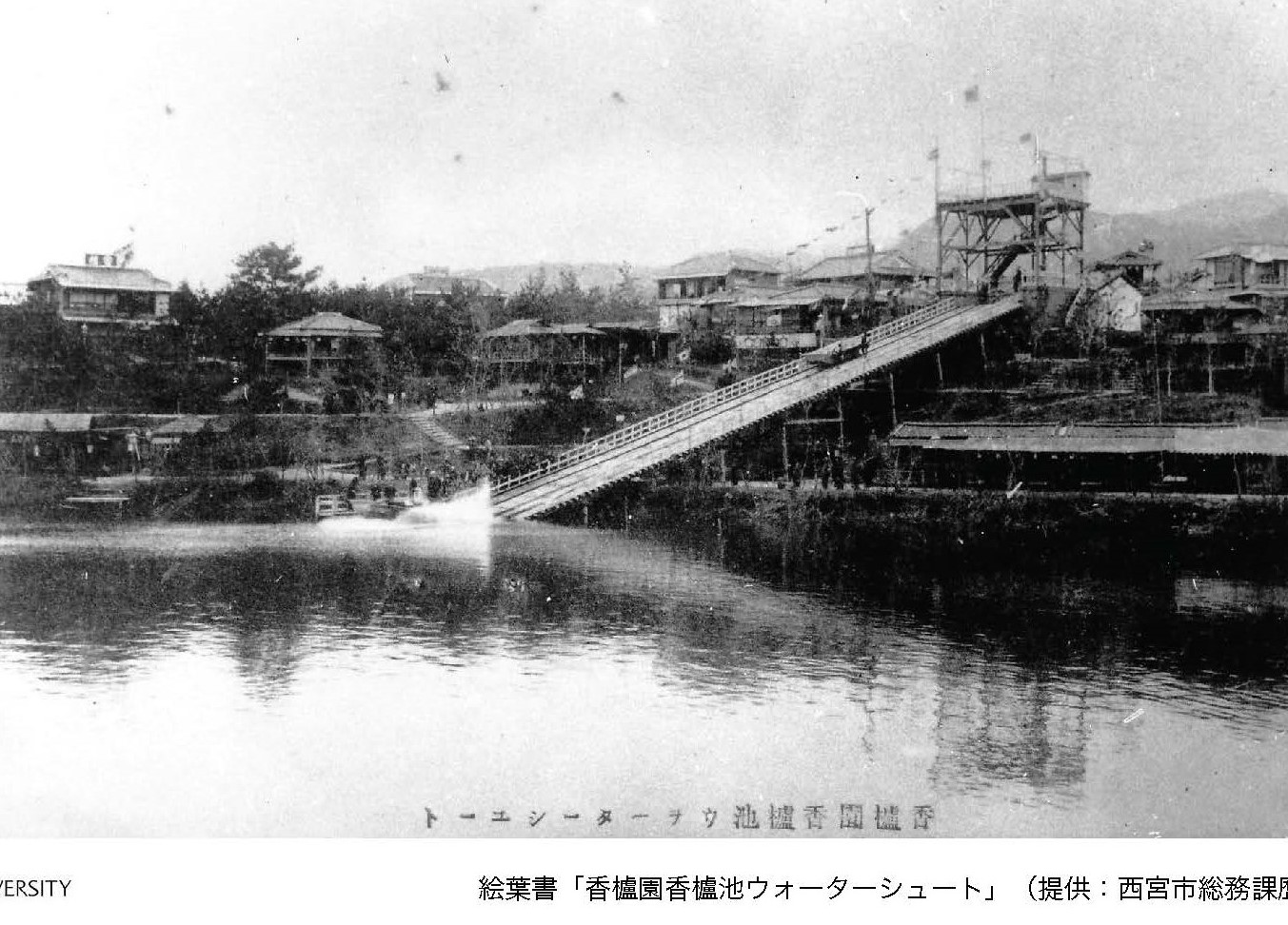
ニュース・プレスリリース
【現代社会学部】海老 良平准教授が「『1923関東大震災と阪神間』~阪神間の娯楽とレジャー、震災前夜~」と題する講演を行いました
2024.11.18
- お知らせ
- 現代社会学部
11月17日(日)西宮市民会館にて一般財団法人山本清記念財団主催の講演会で現代社会学部の海老准教授が「『1923関東大震災と阪神間』~阪神間の娯楽とレジャー、震災前夜~」と題する講演を行い、約50名の熱心な方々が聴講しました。
まず「阪神間とは」として地理的な定義、鉄道の開業による大阪商人たちの別荘地・郊外住宅地としての発展、建築・美術・文学・娯楽などからなる「阪神間モダニズム」の形成について説明がありました。そして今年100周年を迎える日本を代表する娯楽(エンタメ)施設である「宝塚大劇場」と「甲子園球場」が武庫川流域に誕生したこと、阪神電鉄・南海電鉄などの私鉄による沿線での海水浴場(香櫨園・濱寺など)開設と大阪の新聞社の関係、近代公園の成立や内国勧業博覧会についてのことなど、「阪神間の娯楽とレジャー」が明治期~大正・昭和初期にかけて発展した背景を中心に興味深い説明が続きました。
続いて、六甲山麓の二つの遊園地(香櫨園遊園地・甲陽遊園)について説明がありました。これらの施設には、遊園地・動物園・ホテル・旅館・劇場・グラウンドなどがあり、香櫨園遊園地は明治43年に日米野球(早稲田大学VSシカゴ大学)が開催されたこと、甲陽遊園は関東大震災で撮影場所を失った映画制作会社がこの地で再興を目指したこと、両施設とも閉園後は大正時代の土地開発会社設立ブームの中で大阪近郊の住宅地として開発・発展し現在の姿になった、との説明がありました。
最後に、宝塚歌劇について説明がありました。明治44年に開発された宝塚新温泉のパラダイス内プールを改造しお伽歌劇「ドンブラコ」を催したことが発祥であること(大正3年)、東京帝国劇場での初公演(大正7年)、火事による劇場の消失とその後の宝塚大劇場建設(竣工大正13年)、関東大震災の年に各地で義援歌劇公演が催されたこと、震災以前も宝塚歌劇が慈善事業(慈善公演)を盛んに行っていたこと、などの説明がありました。
阪神間の娯楽とレジャーは、地理的要素、阪神間モダニズムが発展した時代背景、関東大震災など様々な出来事が重層的につながり、発展したと言える、とのコメントで締めくくりました。
(配信元:学園広報)



